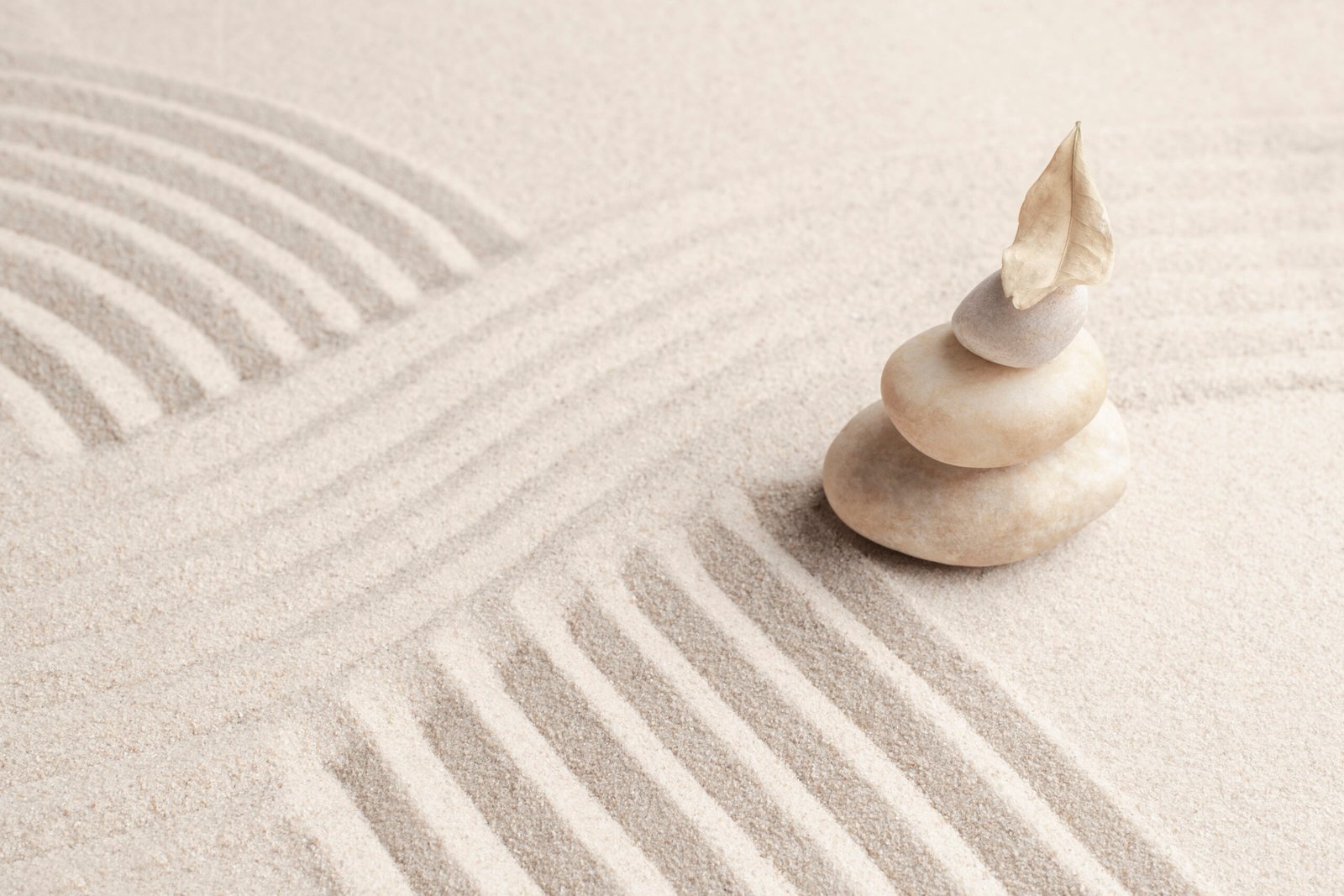
How to Clean a Truly Disastrous Room with ADHD—Clean With ADHD Part 8
You’re standing in the middle of a total disaster—floor gone, every surface buried, brain short-circuiting. You know you need to start, but your body won’t move. You freeze. Or flee. Or scroll. You’ve tried logic. You’ve tried “just five minutes.” But everything still feels like too much.
Here’s why: your brain doesn’t see a messy room—it sees danger. All that visual overload, all those unknowns, send your nervous system into full threat response. That shutdown you feel? That’s not laziness. It’s a survival reflex.
Your brain isn’t being defiant. It’s trying to protect you from unpredictability. And when the mess feels unpredictable, your brain pulls the emergency brake: freeze, dissociate, or escape. That’s why “pushing through” never works—and why shame only deepens the shutdown.
But once you understand what’s actually happening inside your brain, you can stop reacting with guilt—and start responding with strategy.
This method works by shrinking the chaos until your brain feels safe enough to start. No timers. No pressure. Just pure relief, real momentum, and a room that’s clean by the end of the day.
Keep reading—because I’m going to show you exactly how to clean a very messy room with ADHD, without ever burning out.
What You’ll Learn
- If you have ADHD, huge messes can trigger a full nervous system shutdown—because your brain sees them as unpredictable and unsafe.
- When you walk into the room planning to clean it, your brain loads a “clean room” model—and panics when the real mess doesn’t match. Those mismatches (called prediction errors) trigger stress and freeze.
- That’s not laziness. It’s a threat response. Your brain is trying to protect you.
- This method shrinks the chaos until your brain feels safe again—and then uses dopamine, salience, and visual contrast to keep you moving.
- No timers. No pressure. Just small chunks, real relief, and a clean room by the end of the day.
- The worse your room looks right now, the better this method works.
When the Whole Room Feels Impossible
Before you even take a step, your chest tightens, your mind blanks, and your body starts pulling back. You might retreat to the couch, scroll your phone, or sit frozen at the doorway, unsure what to do next. And what most people don’t realize is—that is a stress response. Your brain isn’t being lazy or defiant. It’s reacting exactly how it’s supposed to when faced with something it perceives as dangerous.
Here’s what’s really happening: when you walk into the room with the intention to clean it, your brain loads a mental image of what the room is supposed to look like when it’s done—calm, clear, finished. That clean-room model becomes the expectation. So when your eyes take in the actual chaos, every mismatch between expectation and reality triggers a prediction error—a neurological alert that says, “Something’s wrong.”
The mess doesn’t just look bad—it feels dangerous. All those prediction errors flood your nervous system with uncertainty. And in ADHD brains, uncertainty often equals threat. So your brain does exactly what it’s designed to do: it activates a survival response.
When you collapse onto the couch, your brain is trying to get you away from the “danger zone.” When you scroll your phone, you’re not just distracted—you’re dissociating from the room. That’s a form of escape. And when you stand frozen at the doorway, unable to move, you’re experiencing the same freeze response a deer would in headlights: complete shutdown because there are no clear options and no obvious exit.
It feels like failure. But it’s actually protection. Your brain doesn’t know why the prediction errors are happening—it just knows they’re happening, and it wants to get you out. This is how ADHD overwhelm works at the nervous system level. And once you understand that, you can stop blaming yourself—and actually start helping your brain.
Why This Method Works When Nothing Else Does
When a room reaches disaster level—floor covered, surfaces buried, clutter everywhere—your brain doesn’t just see a mess. It sees danger. The ADHD brain relies on prediction to feel safe, and in a room like this, nothing is predictable. The sheer volume of visual input creates hundreds or even thousands of prediction errors, all at once. And when that happens, your nervous system doesn’t get motivated—it gets flooded.
In earlier posts, we talked about how a small amount of prediction errors—like spotting a few dishes out of place—can give you a little dopamine push to fix it. But when prediction errors are overwhelming, that dopamine doesn’t reach the systems responsible for goal-directed action—it gets overridden by your brain’s need to protect you instead. Your brain doesn’t stop to analyze what’s causing the chaos—it just knows that something is deeply wrong. And because it’s designed to keep you alive, not tidy, it treats the mess like a threat.
This is why you might feel frozen, irritable, or desperate to flee. When your limbic system detects that level of unpredictability, it responds the same way a rabbit would when it spots a predator: freeze, flee, or both. Your limbic system—your brain’s emotional threat detector—floods the body with stress signals to keep you safe, not productive. Your emotional brain interprets the overload as danger, and it reacts accordingly—by shutting you down or driving you to escape. That’s not a character flaw. That’s stress physiology doing exactly what it was built to do.
And this is where traditional cleaning tips fall apart. Timers, checklists, and batching all depend on executive function—the very system that collapses when stress hormones spike. They ask your brain to plan and prioritize when it’s already overwhelmed. That’s why this method is different. It doesn’t demand more from your brain—it reduces the load. It works by shrinking the chaos into something your brain can safely process. It lowers prediction errors, decreases stress, and gives your nervous system time to recalibrate before you step back in. You don’t push through. You regulate first. Then you clean.
So how do you actually start? You begin by making the overwhelm physically smaller—literally.
Start by Creating One Small Mound
When your brain is overwhelmed, the worst thing you can do is try to clean the entire room. That’s like trying to read a book while standing in the middle of a flashing light show. You don’t need a big plan. You need to shrink the chaos until it’s small enough to touch.
Start by carving out a tiny square of white space on the floor. Use your hands. Push the clutter aside just enough to expose a clean patch—an island in the storm. Then gather just five items from the mess and place them in a small mound at the center of that space. Not twenty. Not ten. Five. The goal is not to be efficient—it’s to be safe. Make it absurdly easy.
That little mound, surrounded by white space, becomes your entire task. Not the room. Not the pile behind it. Not everything else you can see in your peripheral vision. You have permission to tune out the rest of the room. Let your eyes and your attention stay anchored to this one little job. That’s your whole world right now.
Your brain may try to rush. It may tell you that five items is ridiculous, that you should do more, move faster, clean “properly.” But especially at the beginning, that impulse is the exact reason you need to slow down. The more overwhelmed you feel, the smaller the chunk needs to be. This isn’t about discipline—it’s about survival. You’re not cleaning a room. You’re helping your nervous system feel safe enough to stay.
Clean That One Mound—Then Retreat
Now clean just that one mound. Don’t sort. Don’t batch. Don’t optimize. Just pick up one item, walk it to where it belongs, and come back. If something doesn’t have a home, put it in the last place you remember seeing it, or pick a temporary “for now” spot. This isn’t organizing. This is clearing.
You may feel like this is a waste of time—one item at a time, five objects total. But that’s your stress talking. If you try to be efficient right now, you’ll trigger the very thing you’re trying to avoid: shutdown. The moment you start making too many decisions, your cognitive load spikes, and your brain may abort the entire session. That’s how cleaning attempts fail—by pushing too far, too fast.
Instead, slow everything down. Give your brain one decision at a time. And when the pile is gone? Stop.
You’re going to want to keep going—or you’re going to want to run away. Either urge is normal. But whether you feel wired or exhausted, the next step is the same: leave the room. Go to a space with white space, minimal clutter, and minimal stimulation. Close your eyes. Breathe. Let your nervous system settle.
This retreat isn’t avoidance—it’s strategic regulation. It prevents the overload from building back up. It keeps your stress low so your brain stays online. Most importantly, it teaches your brain that cleaning doesn’t have to feel like danger. It can feel like success. But only if you stop when you’re still winning.
Use the White Space Loop to Build Momentum
Once you’ve taken a break and your nervous system has had a chance to reset, you can return to the room and repeat the process. Don’t start scanning the whole space for your next move. Just carve out another tiny square of white space—right next to the last one if that feels easiest—and gather a few more items into a small mound.
Make sure the mound is visually separate. This step matters more than people realize. The brain needs contrast to recognize progress. If you start blending your current task into the surrounding mess, your nervous system loses that clear visual feedback, and your motivation starts to fade. That’s why every pile you tackle should be surrounded by white space. Let your brain see the difference.
Then do what you just did: pick up one item, walk it away, repeat. And when the pile is done? Retreat again. Go rest. Reset. Let your brain process the win. This is what I call the white space loop—and it’s how you clean a disaster zone without spiraling. One safe chunk, one visible win, one regulated break at a time.
You don’t need to plan ahead. You don’t need a checklist. You just return, carve out another patch, clean, and retreat. Each cycle lowers your stress a little more. Each new piece of white space creates a prediction error that says, “Hey—this is better than it was a minute ago.” And that’s what fuels the motivation to keep going.
At some point, you’ll look around and realize—this isn’t a disaster anymore. There’s space. There’s calm. That’s when you’re ready for the next step.
When You’re Ready, Start Integrating the Rest
As you continue the white space loop, you’ll eventually clear a good portion of the floor. And when that happens, something important shifts—your stress begins to drop. Your prediction error load decreases, your nervous system feels calmer, and suddenly the room doesn’t feel quite so threatening. That’s your signal that it’s safe to start expanding the scope.
At this point, you’ll probably still have items scattered on surfaces—on tables, chairs, shelves, maybe even on the bed. Instead of trying to tackle each area separately or reorganize everything at once, begin working those items into your existing process. Start dropping them into your next small mound on the floor. Just take a few at a time, move them into the white space, and handle them like you’ve handled everything else—one item at a time.
This is key, because what we don’t want is to finish the floor, feel proud of the progress, and then dump everything from the shelves onto that newly cleared space. That creates a mental crash—your brain sees the floor messy again and thinks, “I’m back at zero.” It feels like all your effort was for nothing, and that emotional dip can derail the entire process.
By gradually integrating the rest of the room before the floor is fully finished, you avoid that “false reset” moment entirely. You keep your momentum. You stay in control. And your brain continues to experience progress—not panic.
And if motivation still feels fragile at this point, there’s a simple way to strengthen it: show your brain the proof.
Use Before-and-After Photos to Boost Motivation
If the room feels overwhelming at first—so messy you can’t even see where to begin—taking a photo before you start can be surprisingly powerful. Snap a quick picture of your starting point, even if it’s just one small pile inside your white space. You don’t need perfect lighting or angles. This isn’t about social media. It’s for your brain.
Once you’ve cleaned that patch, and especially during your retreat, take a moment to compare the before and after. Let yourself see the difference. That visual contrast isn’t just satisfying—it’s motivating. Your brain recognizes that something improved, and that sense of progress gives you a natural lift. It feels rewarding. And that small, visible win is often exactly what keeps you going.
Even if it feels like just a little win, don’t skip this step. In the beginning, when progress feels slow or invisible, these small visual surprises are what keep your momentum alive. You’re not just cleaning—you’re teaching your brain to expect improvement. And each time it sees that improvement clearly, it becomes more motivated to continue.
Respect the Need to Retreat
As you keep looping, one of the most important skills you can build is knowing when to stop. Not at the end of the room. Not at the end of a checklist. But the moment your body tells you you’re approaching overload.
If you start to feel foggy, irritable, numb, or frozen—don’t push through. Those aren’t signs of laziness. They’re signals that your brain is tipping back into stress. And stress shuts down progress. Instead of overriding the signal, honor it. Step away.
Go to a quiet, low-stimulation area. Somewhere with white space and minimal clutter. Sit down. Close your eyes. Breathe. Let your system re-regulate. Often, during that pause, you’ll notice something unexpected: your brain will quietly offer you your next move. You’ll realize what spot you want to tackle next. And this time, the urge won’t feel forced. It will feel natural.
That’s because your nervous system can’t be forced through fear—but it can be gently guided with safety. Every time you listen to your stress signals instead of ignoring them, your brain learns that cleaning is not a threat. It’s a challenge you know how to handle.
Why This Method Feels Good—and Keeps Working
Something starts to shift as you keep going. The room begins to feel less threatening. Your body relaxes. You start noticing progress—not just visually, but emotionally. And it doesn’t feel like effort anymore. It feels… possible.
Every cleared patch gives your brain a small moment of relief. The white space is unmistakable: something has changed, and it’s better than it was a few minutes ago. That visual feedback creates a sense of momentum. It feels rewarding, and your brain wants more of it.
The retreat cycles protect your working memory. They give your stress systems time to reset, so you never hit that mental wall. You move forward without overloading. And each time you succeed, your brain starts building a new expectation—not one of failure, but one of capability.
Instead of feeling like a person who dreads cleaning, you start to feel like someone who knows how to handle it. One patch at a time. One breath at a time. You stop trying to force yourself to clean—and start trusting yourself to keep going.
Seal the Room with a Real Reward
When the entire room is clean—truly finished—pause. Don’t rush into the next thing or let your attention drift away. You’ve just done something huge, and your brain needs to know that it’s done. Look around slowly. Let your eyes take in the white space, the surfaces, the stillness. Really see what you’ve created.
Now it’s time to use your task completion anchor. This isn’t optional—it’s an essential part of the process. Spray your chosen scent into the room and take a deep breath. If you’ve been using this scent regularly at the end of a task, your brain already knows what it means. It feels like a reward, because that’s exactly what it is. The scent tells your brain: I did it. This task is complete. I can stop now. That moment of closure matters. Without it, your brain may keep the task “open” in the background, making it harder to feel truly finished.
Say it out loud—yes, really: “This room is done. I did it.” Speaking the words helps your brain log the event as complete. If you took a before photo, pull it up now and look at it next to the room in front of you. Let the contrast hit you. This was a room that felt impossible to deal with earlier today—maybe something you thought you’d have to chip away at over multiple weekends. But you did it. In one day. One patch at a time.
Let yourself feel proud. This wasn’t just cleaning—it was self-regulation, persistence, and real change. You worked with your brain instead of fighting it. You proved to yourself that you could do it, even when it felt too big. That’s not just a clean room. That’s a real, earned success. Let that feeling settle in. Let it stick.
You Did It—And Now You Know Why It Works
If you’ve followed this method all the way through, you haven’t just cleaned a room—you’ve also learned how to clean without hurting yourself. You now understand what your brain actually needs when faced with a mess that feels overwhelming: lower stress, lower cognitive load, and permission to retreat when it’s too much.
That retreat isn’t failure. It’s necessary. Every time your brain sends you stress signals—fog, irritability, shutdown, panic—it’s not trying to sabotage you. It’s saying, “This is too much. I’m overloaded.” Your brain is processing an environment that feels unpredictable and unsafe. That stress response isn’t laziness or avoidance—it’s your nervous system trying to protect you. And the most powerful thing you can do in those moments is listen.
By giving yourself small, manageable tasks, surrounding them in white space, and pausing to rest when your body asks for it, you’ve built a system that’s actually sustainable and works every single time. This method teaches you to work with your brain—and that’s what makes this different.
Because here, we don’t try to motivate ourselves through adrenaline. We don’t hijack stress hormones to force a few minutes of action and call that success. That approach might get you through a drawer or a shelf, but it teaches your brain that cleaning is painful. Unsafe. Something to brace for. And I refuse to teach you that.
That’s what so many people with ADHD have been taught their entire lives: to push through, to override, to get things done by making themselves miserable. But that’s not healing. That’s survival. And I won’t encourage anyone to build their life on a stress response. Not here. Not ever.
What you’ve just done is the opposite. You made progress by staying calm. You finished by staying safe. You’ve shown your brain that cleaning doesn’t have to mean panic, dread, or failure. It can mean clarity, relief, and pride. And now that you’ve done it once—you can do it again. Because now you know how.
Try It—and Tell Me How It Felt
The next time you find yourself standing in the middle of a disaster—whether it’s the kid’s bedroom after a big play session, the kitchen or whole house after a party, or just a quiet, slow collapse because you’ve been depressed for weeks—remember this method. You don’t need to panic. You don’t need to brace yourself. You already know what to do.
Maybe that disaster is happening right now. Maybe your space feels like a tornado came through and left no clear place to start. It doesn’t matter how bad it looks or how long it’s been that way. This method will always work. You’ve seen how. You’ve felt why.
So the next time it happens—or this time—use it. Start with one small mound. Build a little white space. Retreat when you need to. Regulate first. Then clean.
And when you do it, I want to hear about it. Drop me a line. Tell me how it felt. Tell me what surprised you. Tell me when you started to feel that shift in your body and brain from panic to proud. I already know this method works—but I want to know how it worked for you.
Because I want you to feel better. I want you to feel calm when you clean. I want you to feel proud when you finish. And when you do, I want to hear every part of it.
You’re not alone in this—and I can’t wait to hear your story.
This Was the Final Post in the Clean With ADHD Series
If this post helped you, don’t stop here. This was the last post in my Clean With ADHD series—and if you haven’t read the earlier ones, now is the perfect time to go back.
Each post in the series builds on the last, giving you the tools to clean without stress, without burnout, and without having to fight yourself every step of the way. If you want to transform your relationship with cleaning—to make it feel easy, satisfying, even enjoyable—then going through the whole series will change everything.
✨ Click here to view the full Clean With ADHD series.
You don’t have to hate cleaning. You don’t have to dread it. You can rewire the way your brain feels about it—so it actually becomes something that feels good to do. Not just doable. Not just tolerable. But calm, clear, and genuinely rewarding.
This isn’t just about having a clean home. It’s about rewriting your life to fit your brain—so you can finally start to thrive. One messy room at a time.



